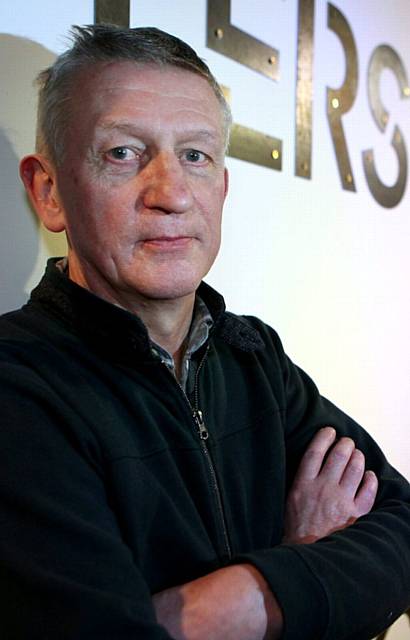Display asks questions and shows our history...
Reporter: Robbie MacDonald
Date published: 20 June 2016
A SADDLEWORTH photographer known for his documentary images of people at work has organised a new photographic exhibition at Manchester's People's History Museum.
Ian Beesley has curated the show called Grafters, which charts how photographers have portrayed workers and industry from the Victorian era to today.
It includes a 1960s shot of Oldham's mills taken by a photographer associated with the Sunday Times Magazine.
But the exhibition also asks if photography has reinforced stereotypes of the north and what role workplace photography has in today's world of insecure employment and zero-hours contracts.
Ian Beesley originally worked in the water industry in Bradford, before becoming a photographer.
Since the 1980s, he has photographed workers in the textiles, steel, brewing, mining and water industries, along with other subjects such as health, medicine, football and rugby union.
Today, he lives in Saddleworth, which inspires him to take landscape photographs and he also heads a photography course at the University of Bolton.
Speaking about the Grafters exhibition, he said: "Photography is one of the great products of the industrial revolution, yet it has always had an interesting, yet uncomfortable, relationship with the portrayal of industry and workers.
"One would expect that photography would have a very close relationship with the representation of industrial society, but this does not seem to be the case.
"Grafters is an attempt to understand the history and development of this troubled relationship, from its beginnings in the 1840s through to the present day.
"The majority of contemporary and historical photographs of industry that I've seen bore little or no resemblance to my experience of industry."
Visitors can see how working people have been portrayed for different purposes throughout the 19th, 20th and 21st centuries.
In the Victorian era, employees were often instructed by business owners to appear in photographs as small objects to highlight the size and strength of huge engineering products such as ships or trains.
In other periods, workers were given a more heroic treatment for mass-circulation magazines or patriotic and political causes.
Later, with wider access to affordable, smaller cameras, workers themselves began taking pictures of their workplaces and lives. Today, we have mobile phones and 'selfies'.
The exhibition includes unseen images from important collections and poet Ian McMillan has written new poems about the unknown people featured in the images.
The exhibition includes work by John Bulmer, a pioneering colour photographer in the 1960s, whose work of the industrial north was featured in The Sunday Times Magazine in that era. One of his images captures the mill chimneys of Oldham set against the Pennine hills.
Other images include women working in the coal industry and cleaning locomotives.
For a talk linked to the exhibition, Mr Beesley took a huge industrial camera once used at Rome Mill in Springhead, Oldham, to the Manchester museum. The camera, a 1920s Hunter Penrose, was originally used in the wallpaper industry at Rome Mill and now belongs to Gallery Oldham, where it was refurbished by Mr Beesley. It is more than 6ft long and 4ft high, and originally took 20 inch square negatives for wallpaper design. Now it can take a batch of 20 smaller negatives. The Big Big Camera project is supported by Gallery Oldham and Arts Council England.
Ian Beesley's own workplace images have been exhibited from Bradford and Manchester to venues in Italy and China. His photographs are held by institutions including Bradford's National Media Museum, The Royal Photographic Society, The Smithsonian Institute in Washington DC and the National Museum of Labour in Helsinki. He has published 25 books and has been a artist in residence for organisations including Gallery Oldham and Chetham's Library in Manchester.
Grafters runs at the People's History Museum, Manchester, until September 18.
Most Viewed News Stories
- 1Milan Bar in Lees and The Bank at Delph close doors with immediate effect
- 2Punch perfect Kyle is Oldham's latest national boxing champ
- 3Group wanted following attempted robbery incident on a tram in Shaw
- 4Five arrested after two young victims are robbed
- 5Shaw prospect Rafferty aims to shine at massive 'Ring Warriors Unleashed' show





